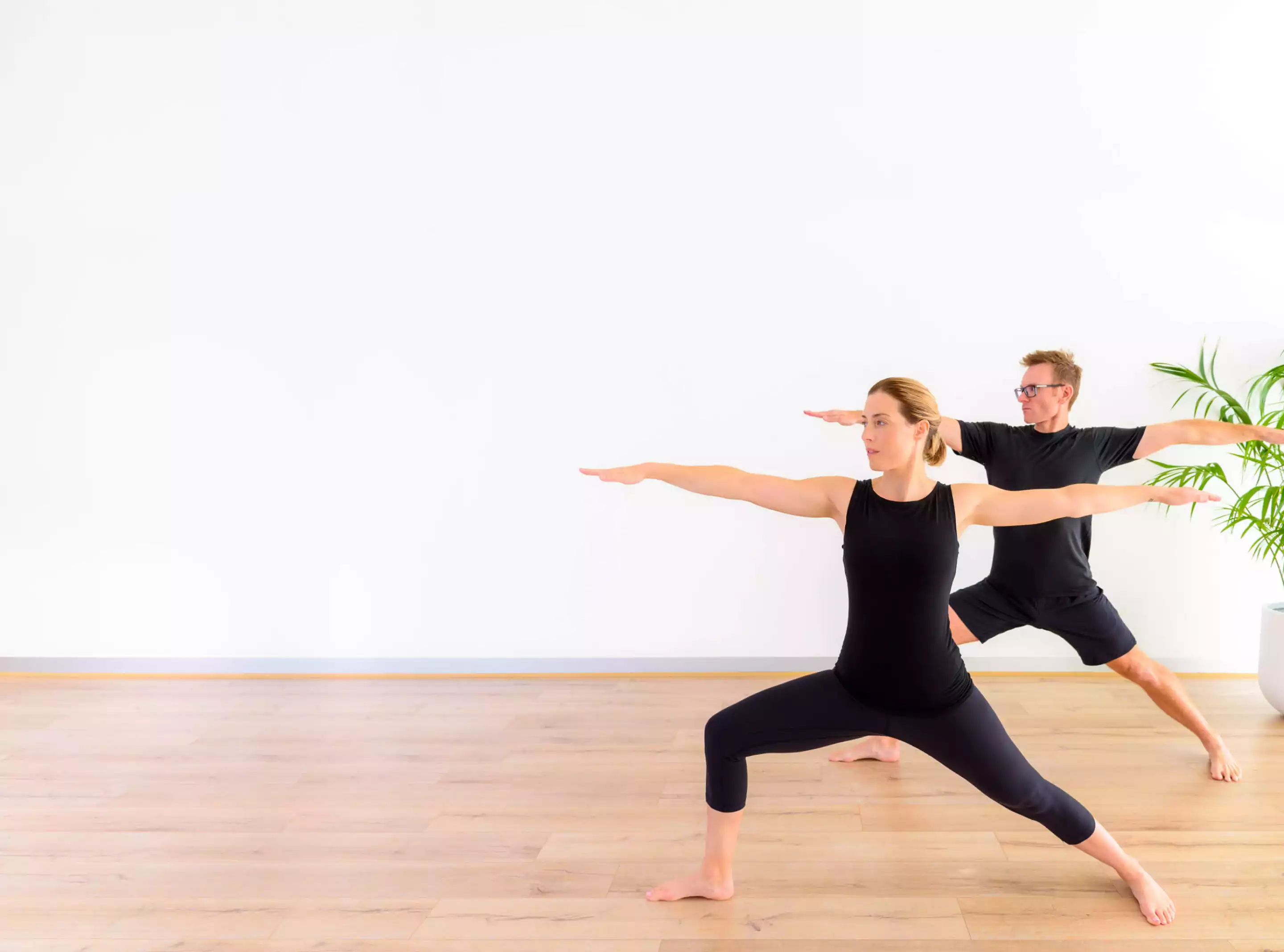
If you’d like to touch your toes without breaking a sweat, then roll out your mat and get into Half Moon Pose.
Regular yoga practice is one of the best ways to improve your flexibility – whether you join a class or create your own routine from the privacy of home.
You won’t turn into an overnight contortionist by any means, but you’ll still be impressed with the results.
Committed Yogis can expect to DRASTICALLY increase their flexibility levels in a short period of time. For example, participants in one study enhanced their flexibility by 35 per cent, after only two months of yoga.
Another study shows that regular Hatha yoga practice (twice weekly over five months) significantly increased joint mobility and body flexibility for the women involved.

There’s no denying that yoga improves flexibility, but why is this so important?
Flexibility enables us to move our joints, muscles and connective tissues through a range of motions in an unrestricted manner – without pain or discomfort.
Key benefits of flexibility:
Flexibility involves stretching tight muscles and strengthening underactive muscles. Muscle imbalances are corrected, which lowers the risk of injury when participating in physical activities. This also assists muscle recovery.
Experience less pain, tension and discomfort when you focus on building flexibility.
Your posture and balance improves as you strengthen and lengthen your core, joints, muscles and connective tissues.
When you open your body through stretching, you’re more likely to feel relaxed and confident. Expansive power poses have a positive chemical effect by lowering cortisol levels, which helps us feel grounded and empowered. Stretching also releases tension from the body, and this benefits the mind.
Flexibility enables athletes to access a greater range of movement and create more force with their muscles, which enhances their sporting performance
Flexibility improves blood flow and circulation.
How exactly does yoga improve flexibility?
Yoga postures increase mobility in the joints and muscles, while building strength at the same time. Regular practice increases your range of motion, loosens tension in the body and reduces stress on the joints.
All yoga styles help to improve flexibility, it doesn’t matter what kind of class you participate in. If flexibility is your main focus however, you may get the most benefit from Hatha, Vinyasa or HIIT Yoga.
Here are some of the most effective postures for flexibility:
Downward facing dog
Half moon pose
Low lunge
Plow pose
Wide-angle seated forward bend
Eye of the needle pose
Intense side stretch
Head to knee stretch
Cat-cow pose
Bow pose
Never push yourself:
Although yoga is gentle and safe, it’s important that you go at your own pace, especially when first starting out.
Everyone in the class is at a different level, so you shouldn’t compare yourself to others.
Please don’t push your body beyond your comfort zone. Take the time to do each pose correctly, to prevent injury.
Just go to the level that feels best for you, even if that means adapting a certain pose or avoiding it altogether. Never force yourself into a position that feels too uncomfortable or creates pain.
Yoga conditions your body to become more flexible, but this takes time. Don’t be disheartened if you can’t manage a certain pose today, as you should improve with regular practice.
Improve your flexibility with Western Wellness Yoga
Experienced instructors can guide you through each posture, to make sure you’re gently challenging yourself while staying safe and honouring limitations.
Our yoga and meditation classes are open to everyone, from beginners to experienced Yogis. We offer comprehensive classes designed for all ages and fitness levels.
Call us on 0409 248 591 or fill out this contact form to find out more.
Start yoga today with a 2 week trial for $49.50
Includes unlimited studio + online classes
